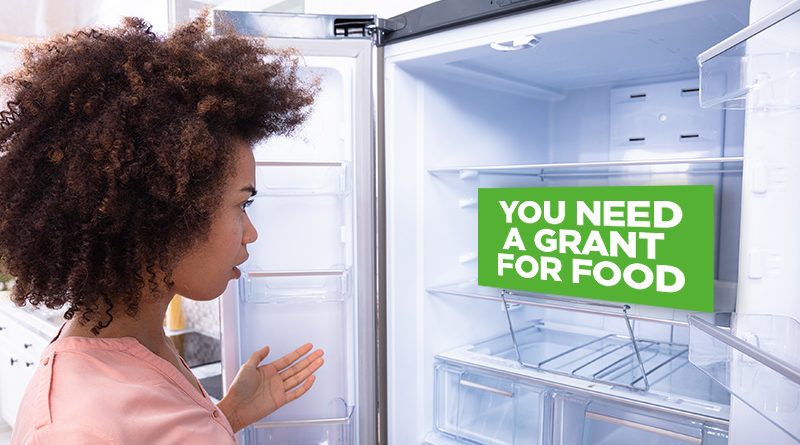Grant Proposals: Problem or Needs Statement
Every grant application needs to include a Problem or Needs Statement. Want to win the grant? Then it’s vital that you put thought and effort into establishing what the need or problem is in advance. The fact is, this is one of the first steps you take in the grant-writing process. It’s important to create a problem or needs statement before you write an effective proposal. Within this seemingly small addition to your application, you will outline the social need you plan to address. More importantly, by doing so you will also demonstrate the real-world impact funding will have.
GrantWatch wants to do everything possible to provide you with the tools you need to be successful in your grant seeking process. We feel the importance of the Need Statement is often overlooked. To that end, we hope the following information helps you to better understand its importance when preparing your grant proposal.
What is a Needs Statement?
Your Needs Statement directly defines the social issue or community problem you want to address. Further, it also outlines the context surrounding the problem, as well as identifying who will receive the benefit of assistance. Even more importantly, it does all of this in a clear and concise manner.
How Does It Function?
The functionality of your problem or needs statement is as the primary driver of your grant proposal. It explains the problem at hand, its effect on the community, the benefits of solving it, and the ramifications of not solving it.
Why Is It Important?
Quite simply, the needs statement for a grant proposal is important because it tells potential funders why they should care about the issue. A good needs statement inspires benefactors to be agents of change. It makes them want to take some responsibility for improving the lives of others.
In summation, your needs statement is the starting point for your grant proposal. This synopsis establishes the context for the whole body of work and helps your funder understand the depth of both the issue at hand and your dedication to resolving it. Thankfully, the needs statement can be applied to any grant, whether you are an individual, a nonprofit, or a small business. We offer the following grants from our database, all of which display a clear community need.
Grants, Cooperative Agreements and In-kind Donations
- Cooperative agreements to government agencies, Tribes, and IHEs for fertility control, habitat conservation, and herd management for wild equines.
- Grants of up to $60,000 to nonprofits, government agencies, tribal entities, and educational institutions for projects to preserve and protect natural resources. Funding supports community outreach, environmental education, and ecological improvements. Grant eligibility will be conducted on a nationwide basis.
- In addition, there are grants to IHEs for collaborations on climate change solutions to preserve the world. Funding is to promote partnerships and collaborative research between institutions on projects, as well as training and exchange programs to address climate change.
- Grants of up to $500 to organizations for events promoting the preservation of artistic and historic works. Funding is to promote public awareness of these projects and programs. Funding is to be used for site fees, publicity costs, travel costs, and honoraria for the presentation of public lectures.
- There are also grants of up to $5,000 and in-kind donations to nonprofits, groups, and businesses to preserve, protect, and restore important wildlife habitat in ponds, rivers, swamps, wetlands, and streams. Priority will be for both new and ongoing projects. Applications will be from innovative groups in local communities working to make world preservation efforts sustainable.
Additional Grants
- Grants of up to $50,000 to nonprofits, commercial organizations, government agencies, tribes, and IHEs for educational programs related to preserving ocean and coastal health. In fact, funding is for tools and programs related to ocean acidification.
- There are grants to states and Native American tribal governments for preemptive actions to preserve the land by mitigating the effects of natural hazards and disasters. Funding is for mitigation projects and capability and capacity-building activities.
- Also, grants of up to $85,000 to organizations, filmmakers, and production companies for the preservation of history through the creation of Holocaust-related films. Films will have an educational value and broad distribution potential. Funding is for project phases of development, production, or post-production. Priority will be for historical accuracy, as well as creativity, vision and planning.
- Scholars may receive funding for original research investigating the various factors that affect diverse immigrant populations and their descendants. It’s intended to support studies on the effects of race, citizenship, legal status, etc.
- Lastly, grants to nonprofits, governmental agencies, tribes, IHEs, and museums for activities related to preserving Native-American cultural objects. Funding supports projects for consultation or documentation of Native American cultural items. This will include human remains, funerary objects, sacred objects, and objects of cultural patrimony.
We hope this information will be helpful in preparing your grant proposal. What’s more, we wish you well as you begin your journey!
About GrantWatch
With close to 8,000 grants currently available, GrantWatch.com is the leading grant listing directory. Upgrade to a MemberPlus+ subscription to view the full grant details, including eligibility criteria and application information. For more information, you can also visit the GrantWatch FAQ page. To see the great value of all 20 of the top GrantWatch features, click here.
Please Note: There is no guarantee by GrantWatch nor the author that grants will be awarded as a result of this information.

